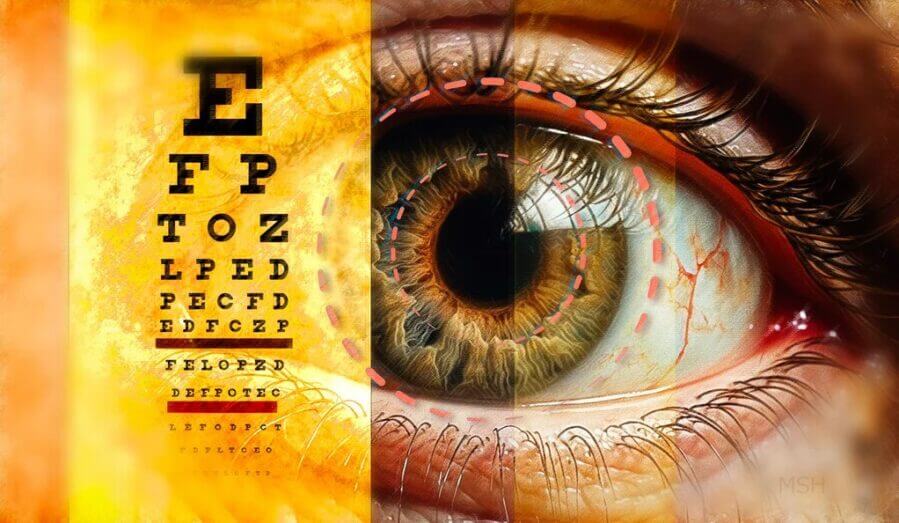In the West, age-related macular degeneration (AMD), a condition which weakens our central vision, is the main reason for loss of sight. This occurs when tiny particles made up of fats and proteins, known as lipofuscin, gather in the retina, harming cells. There isn’t a solid treatment for AMD as of now, and it’s still a mystery how our eyes naturally prevent this build-up.
However, a group of researchers from Yale and Germany’s University of Tübingen have found a unique process in our eyes that helps protect them. It involves a peculiar reaction in melanin, a pigment, which removes lipofuscin. This finding might offer new insights into treating AMD in the future.
Douglas E. Brash, a professor at Yale and co-author of the study, said, “It’s beginning to look like melanin is nature’s solution to a variety of biology’s challenges.” Their results were released on May 8 in a science journal.
The cells in our eyes that change light into signals for the brain, called photoreceptors, have a part filled with a molecule named rhodopsin. This molecule captures light and turns it into an electrical signal. These cells continuously go through a process of recycling, where the useful bits are collected for reuse, while the new parts are created at the base.
Lipofuscin is formed from the material that can’t be broken down for recycling. As it increases, it harms the cells in the retina, leading to AMD.
Previous studies using albino mice showed that lipofuscin build-up and damage to the retina occur sooner than in others. In the new study, researchers observed undigested parts in the retinal cells of these mice.
Ulrich Schraermeyer, a professor at the University of Tübingen, said, “The remnants of undigestible discs were ten-fold more frequent in albino mice than in pigmented mice.”
Melanin, found in hair, skin, and eyes, changes between individuals and becomes less effective with age. It’s also absent in albino mice, hence their colour. Thinking that this pigment might prevent lipofuscin from gathering, the researchers made the albino mice produce melanin. They discovered that this reduced the amount of lipofuscin in the mice.
Professor Brash, who studies how sunlight causes skin cancer, had earlier found that a process within melanin can lead to DNA damage. He said, “These quantum chemistry reactions excite a melanin electron to a high energy state and flip its spin, allowing unusual chemistry afterward.”
To check if this process could help in removing lipofuscin, he found substances that could directly excite electrons and one that could stop the excited melanin from starting other reactions.
After proving that melanin was necessary for recycling photoreceptor cells and stopping lipofuscin build-up, he wondered if a drug that could mimic this process might be a way to bypass the declining effectiveness of melanin with age.
Upon testing the substances on retinal tissue from albino mice, Yanan Lyu, the study’s lead author, said, “In two days, the lipofuscin diminished substantially.”
The way excited electrons reverse lipofuscin is yet to be understood. However, Professor Schraermeyer is hopeful about taking this discovery to the clinic. He said, “Chemiexcitation is the missing link, and it should let us bypass the problem that AMD begins when the eye’s melanin declines with age. A drug that is chemiexcited directly may be a breakthrough for our patients.”

